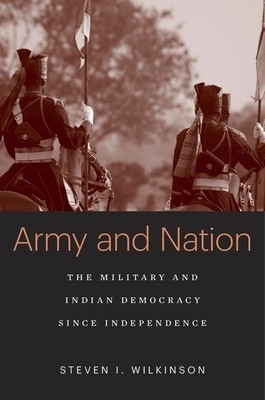
- We will send in 10–14 business days.
- SAVE -10% with code: EXTRA
Reviews
Description
At Indian independence in 1947, the country's founders worried that the army India inherited-- conservative and dominated by officers and troops drawn disproportionately from a few "martial" groups--posed a real threat to democracy. They also saw the structure of the army, with its recruitment on the basis of caste and religion, as incompatible with their hopes for a new secular nation.
India has successfully preserved its democracy, however, unlike many other colonial states that inherited imperial "divide and rule" armies, and unlike its neighbor Pakistan, which inherited part of the same Indian army in 1947. As Steven I. Wilkinson shows, the puzzle of how this happened is even more surprising when we realize that the Indian Army has kept, and even expanded, many of its traditional "martial class" units, despite promising at independence to gradually phase them out. Army and Nation draws on uniquely comprehensive data to explore how and why India has succeeded in keeping the military out of politics, when so many other countries have failed. It uncovers the command and control strategies, the careful ethnic balancing, and the political, foreign policy, and strategic decisions that have made the army safe for Indian democracy. Wilkinson goes further to ask whether, in a rapidly changing society, these structures will survive the current national conflicts over caste and regional representation in New Delhi, as well as India's external and strategic challenges.EXTRA 10 % discount with code: EXTRA
The promotion ends in 20d.23:10:13
The discount code is valid when purchasing from 10 €. Discounts do not stack.
- Author: Wilkinson
- Publisher: Harvard
- ISBN-10: 0674728807
- ISBN-13: 9780674728806
- Format: 16.3 x 24.1 x 2.5 cm, hardcover
- Language: English English
At Indian independence in 1947, the country's founders worried that the army India inherited-- conservative and dominated by officers and troops drawn disproportionately from a few "martial" groups--posed a real threat to democracy. They also saw the structure of the army, with its recruitment on the basis of caste and religion, as incompatible with their hopes for a new secular nation.
India has successfully preserved its democracy, however, unlike many other colonial states that inherited imperial "divide and rule" armies, and unlike its neighbor Pakistan, which inherited part of the same Indian army in 1947. As Steven I. Wilkinson shows, the puzzle of how this happened is even more surprising when we realize that the Indian Army has kept, and even expanded, many of its traditional "martial class" units, despite promising at independence to gradually phase them out. Army and Nation draws on uniquely comprehensive data to explore how and why India has succeeded in keeping the military out of politics, when so many other countries have failed. It uncovers the command and control strategies, the careful ethnic balancing, and the political, foreign policy, and strategic decisions that have made the army safe for Indian democracy. Wilkinson goes further to ask whether, in a rapidly changing society, these structures will survive the current national conflicts over caste and regional representation in New Delhi, as well as India's external and strategic challenges.

Reviews